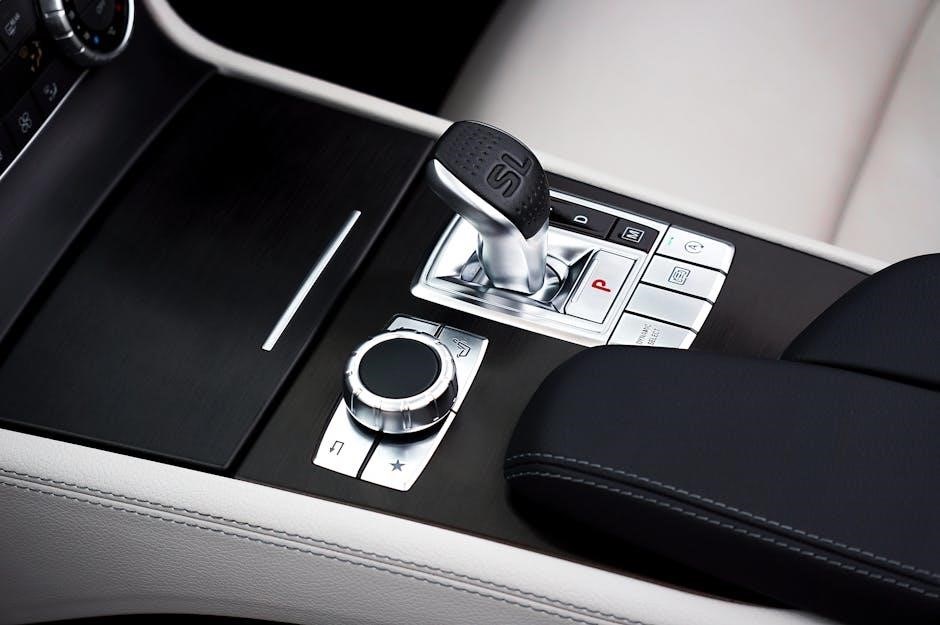Semi trucks have various transmission options, including manual and automatic, with drivers choosing based on preference and driving conditions, using
technology
to improve overall performance and efficiency always matters.
Overview of Manual and Automatic Options
The semi truck industry offers a range of transmission options, including manual and automatic, each with its own advantages and disadvantages.
Manual transmissions provide drivers with more control over the vehicle, allowing for better performance in certain driving conditions.
On the other hand, automatic transmissions offer a more straightforward driving experience, reducing the need for manual shifting and clutch operation.
Both types of transmissions are widely used in the industry, with some drivers preferring the flexibility of manual transmissions and others opting for the ease of automatic transmissions.
According to recent trends, the choice between manual and automatic transmissions ultimately depends on individual driver preference and specific driving needs.
As technology continues to evolve, we can expect to see further developments in both manual and automatic transmission options for semi trucks, aiming to improve overall performance, efficiency, and driver experience.

Manual vs Automatic Semi Trucks
Drivers compare manual and automatic semi trucks based on personal preference and specific driving needs always using
- lists
to evaluate.
Driver Preference and Road Conditions
Driver preference and road conditions play a significant role in the choice between manual and automatic semi trucks, with many drivers opting for manual transmissions in certain situations, such as hauling heavy loads or navigating challenging terrain, using technology to improve overall performance and efficiency. The type of transmission can affect the driver’s ability to control the vehicle, particularly in situations where precise control is necessary. In addition, road conditions, such as steep inclines or rough terrain, can also impact the choice of transmission, with manual transmissions often providing more control and power. As a result, drivers must consider their individual needs and preferences when deciding between manual and automatic semi trucks, taking into account factors such as the type of cargo being hauled, the terrain being traversed, and the level of control required. This decision can be complex, involving multiple factors and considerations, including the use of
- lists
to evaluate.

Advantages of Manual Transmissions
Manual transmissions offer better control and power for heavy loads using advanced technology and driver skill always.
Control and Power for Heavy Loads
Manual transmissions provide semi truck drivers with better control and power for heavy loads, which is essential for navigating varying road conditions and ensuring safe transportation of goods. The use of manual transmissions allows drivers to have more control over the vehicle, particularly when hauling heavy loads or driving in challenging weather conditions. This is because manual transmissions enable drivers to manually shift gears, providing more precise control over the vehicle’s speed and torque. Additionally, manual transmissions are often preferred by experienced drivers who value the control and responsiveness they provide. With the use of advanced technology, manual transmissions have become more efficient and reliable, making them a popular choice among semi truck drivers. Overall, the control and power provided by manual transmissions make them well-suited for heavy loads and challenging driving conditions. Manual transmissions are widely used in the trucking industry due to their ability to provide better control.
Automatic Transmissions in Semi Trucks
Newer models of semi trucks often feature advanced automatic transmissions, using
- technology
to improve performance and efficiency always with great results and benefits.
Newer Models and Improved Technology
Newer models of semi trucks are being equipped with improved technology, including advanced automatic transmissions that provide better performance and efficiency. The use of
- computerized systems
and
- sensors
allows for smoother shifting and improved fuel economy. This technology is becoming increasingly popular in the trucking industry, as it provides several benefits, including reduced driver fatigue and improved safety. Additionally, newer models of semi trucks are being designed with
advanced materials
and
aerodynamic designs
to reduce wind resistance and improve overall performance. As a result, semi truck manufacturers are able to produce vehicles that are more efficient, reliable, and safe, which is beneficial for both drivers and the environment. The improved technology in newer models of semi trucks is expected to continue to evolve and improve in the coming years, leading to even more efficient and safe vehicles.

Automated Manual Transmissions (AMTs)
AMTs use a computer to shift gears, offering benefits to drivers and fleet owners always with great efficiency.
Combining Manual and Automatic Features
Automated manual transmissions combine the benefits of manual and automatic transmissions, using a computer to shift gears and providing a smooth driving experience. This technology allows for improved fuel efficiency and reduced driver fatigue. The computerized system enables the truck to adjust to different driving conditions, such as hills and traffic, to optimize performance. Additionally, AMTs offer a more comfortable ride for drivers, reducing the need for constant gear shifting. With the ability to customize settings, fleet owners can also benefit from improved vehicle performance and reduced maintenance costs. Overall, the combination of manual and automatic features in AMTs provides a unique solution for the trucking industry, offering a balance of efficiency, comfort, and control. By leveraging this technology, drivers and fleet owners can improve their overall driving experience and reduce costs. This innovative approach to transmission technology is becoming increasingly popular.

Importance of Transmission Type for CDL
Transmission type affects CDL restrictions, with automatic-only licenses available, using
- specific
guidelines always.
Automatic-Only Restriction for New Drivers
New drivers earning a CDL in an automatic truck may face an automatic-only restriction, limiting their ability to operate manual transmission vehicles, which can impact their job prospects and career advancement, according to the internet.
The Federal Motor Carrier Safety Administration regulates the CDL program, including the automatic-only restriction, which is intended to ensure that new drivers have the necessary skills and training to operate commercial vehicles safely, using a variety of
- tests
and evaluations to determine their proficiency.
The automatic-only restriction can be removed by completing additional training and testing in a manual transmission vehicle, which can provide new drivers with more flexibility and opportunities in their careers, as well as access to a wider range of job openings and higher paying positions, with many companies requiring drivers to have experience with manual transmissions, and the ability to operate these vehicles safely and efficiently.
Overall, the automatic-only restriction is an important consideration for new drivers, and can have a significant impact on their careers and opportunities in the trucking industry, with many drivers choosing to obtain the necessary training and certification to operate manual transmission vehicles, and increase their chances of success.
The restriction is in place to ensure that new drivers have the necessary skills and training to operate commercial vehicles safely, and to reduce the risk of accidents and injuries on the road, which is a top priority for the Federal Motor Carrier Safety Administration and the trucking industry as a whole, with a focus on safety and efficiency, and the use of technology to improve the performance and capabilities of commercial vehicles.
